Formal 2 weeks notice letter template
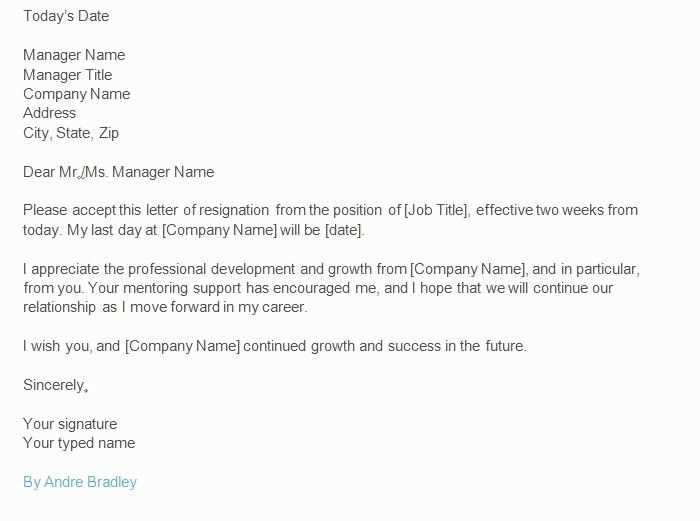
Submit your resignation with a clear and concise two-week notice letter. A well-written letter ensures professionalism and maintains a positive relationship with your employer. Start by stating your intention to resign, followed by your last working day, which should be exactly two weeks from the date of your notice.
Keep the tone respectful and professional throughout. Acknowledge any positive experiences during your time with the company, but avoid unnecessary details. End the letter by offering to help with the transition process and express gratitude for the opportunity.
Here is a simple template you can follow to structure your notice:
Here is the revised version of the text, considering the requirements:
When writing a formal two weeks’ notice letter, clarity and professionalism are key. Ensure the tone remains respectful and concise throughout. Below is an example reflecting the necessary adjustments:
| Section | Example |
|---|---|
| Opening statement | Dear [Manager’s Name], |
| Notice of resignation | I am writing to formally resign from my position as [Job Title] at [Company Name], effective two weeks from today, [Last Working Day]. |
| Reason for leaving (optional) | While I have enjoyed my time here, I have decided to pursue new opportunities that align with my personal and professional goals. |
| Offer of assistance | During my notice period, I am happy to assist in the transition process to ensure a smooth handover of my responsibilities. |
| Closing | Thank you for the opportunity to contribute to the team. I wish you and the company continued success. |
| Signature | Sincerely, [Your Full Name] |
This structure ensures your resignation letter is clear, courteous, and complete. Each section addresses specific points of importance, minimizing ambiguity and demonstrating professionalism. Adjustments can be made based on your situation, but keeping the letter brief and to the point is always appreciated.
- Formal 2-Week Notice Letter Template
Begin your letter by stating your intention clearly. Mention the exact date of your last working day to avoid any ambiguity. A concise and direct approach works best.
Start with a simple salutation, such as “Dear [Manager’s Name],” followed by a statement like: “I am writing to formally resign from my position as [Your Job Title] at [Company Name], with my last day of employment being [Date, two weeks from today].” This ensures there is no confusion about the notice period.
Next, express gratitude for the opportunities you’ve had. Keep it professional and brief: “I appreciate the opportunity to work with such a great team and value the experience I gained during my time here.”
If you feel comfortable, offer assistance during your transition period. For example: “I am happy to help with the transition process, including training my replacement or completing any outstanding tasks.” This shows professionalism and leaves a positive impression.
End the letter with a formal closing, such as: “Thank you again for the opportunity. I wish the team continued success.” Close with “Sincerely,” followed by your name.
A well-written 2-week notice letter should be clear and direct. Here are the key elements to include:
- Professional Salutation: Begin with a formal greeting, addressing the recipient by their title and last name. For example, “Dear Mr. Smith.”
- Statement of Resignation: Clearly state your intention to resign from your current position. Example: “I am writing to formally resign from my role as [Your Position] at [Company Name], effective [date, two weeks from the letter’s date].”
- Last Working Day: Mention the specific last day you will be working, ensuring it aligns with the two-week notice period. This ensures clarity on the timeline.
- Gratitude: Show appreciation for the opportunities and experiences you’ve gained at the company. A simple line like, “I have enjoyed my time working at [Company Name] and am grateful for the support and opportunities provided” can go a long way.
- Transition Assistance: Offer help with the transition process, whether that involves training your replacement or assisting with handover tasks. Example: “I am happy to assist in any way to ensure a smooth transition.”
- Closing Remarks: Finish with a respectful closing that invites further discussion or questions. For example, “Please let me know if there’s anything else I can do during my remaining time here.”
- Formal Signature: End with a professional closing such as “Sincerely,” followed by your full name and position.
Address the letter to your direct supervisor or manager, as they are the person most directly involved in your resignation. Use their official title and full name to maintain professionalism. If you are unsure of the recipient’s exact title, check your company’s organizational structure or HR guidelines to ensure accuracy. Avoid addressing the letter to a generic term like “To whom it may concern” unless there is absolutely no one you can direct it to.
If you are sending the letter to the HR department, be sure to reference your immediate supervisor’s name and your department. This provides clarity and context. Address the letter with a polite tone, keeping it formal but approachable. Ensure that the salutation reflects your relationship, and avoid overly casual greetings.
For example, “Dear Mr. Smith” or “Dear Ms. Johnson” is always a safe and respectful choice. If your workplace is more informal, it’s still best to err on the side of formality when addressing the letter. A formal approach reflects your professionalism and ensures that the letter will be taken seriously.
Best Practices for Writing a Clear Resignation Reason
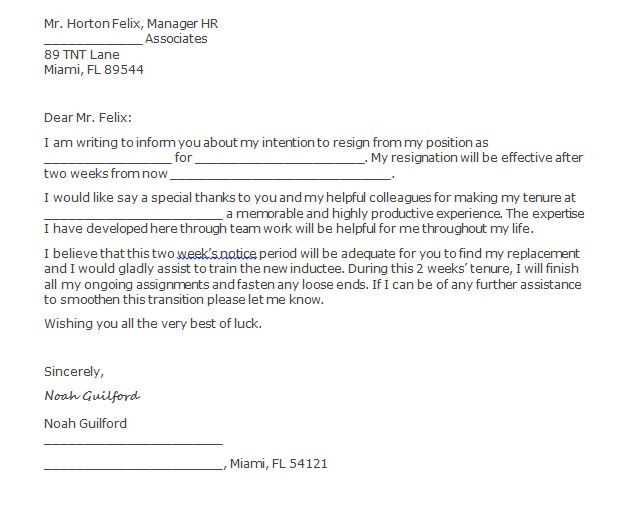
Be direct and specific when stating your resignation reason. Keep it simple and to the point without excessive detail. This ensures your message is understood without confusion.
1. Be Honest but Tactful
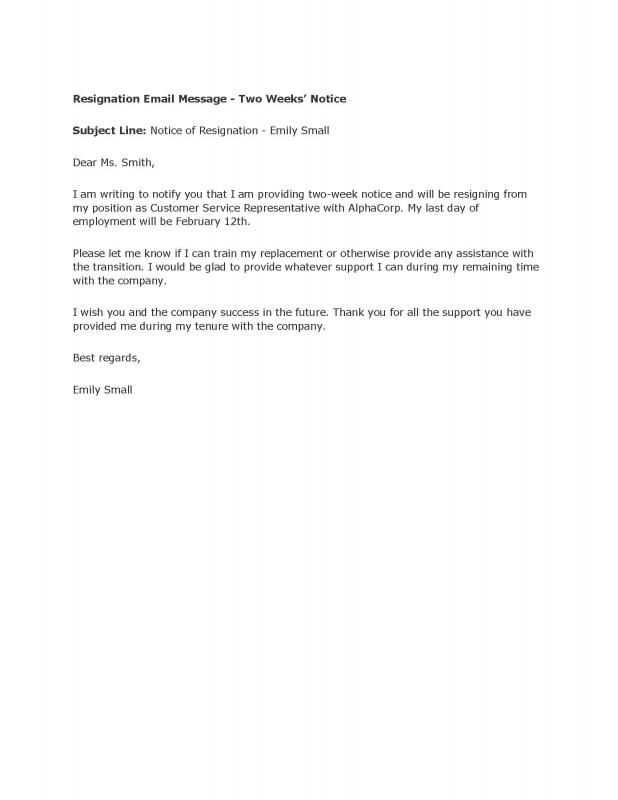
Share the true reason for your resignation, but avoid negativity. For example, instead of saying “The management is terrible,” opt for “I feel my goals no longer align with the company’s direction.” This keeps the tone respectful and professional.
2. Focus on Your Career Goals
Frame your resignation reason around your personal or professional growth. You can mention pursuing a new opportunity or seeking a better work-life balance, which presents a positive outlook for your future without criticizing your current role.
By being clear and concise, you maintain professionalism and leave a lasting positive impression, even when moving on to new opportunities.
Start by expressing appreciation for the opportunities you had during your time with the company. Mention specific aspects of your job that you enjoyed, such as the projects you worked on or the skills you gained. Acknowledge the support and guidance from your team or supervisor, highlighting how it contributed to your professional growth.
Be genuine in your thanks, keeping your tone positive and sincere. It’s important to convey how much you value your time at the company, even as you move on to new opportunities. You can also thank the organization for the personal connections you made and the experiences you gained along the way.
Remember to keep it brief, focusing on the key elements that were most meaningful to you. Avoid over-explaining or adding unnecessary details. A simple, heartfelt message can leave a lasting positive impression and help maintain a good relationship for future networking or references.
Be clear and specific about the date of your last working day in your resignation letter. This will help avoid any confusion and ensure both you and your employer are aligned on expectations.
- Exact Date: State the exact date of your last day, including the day of the week and month, to ensure clarity. Example: “My final working day will be Friday, February 14th, 2025.”
- Transition Plans: Mention your availability to assist with the transition. Offer to help train a replacement or wrap up ongoing projects. This shows professionalism and helps your employer manage the transition smoothly.
- Office Clearance: Include any plans for clearing out your workspace, returning company property (e.g., keys, devices), and transferring responsibilities to colleagues. This will make the final day more organized and less stressful.
- Exit Interviews: If applicable, indicate your willingness to participate in an exit interview, but leave the decision to your employer. Example: “I am open to participating in an exit interview if needed.”
- Gratitude: Thank your employer for the opportunity to work with the company. This helps leave on a positive note, which is valuable for future references.
How to Keep Professionalism in a 2-Week Notice Letter
Be clear and direct. State your intention to resign and specify your final working day. This transparency helps your employer prepare for your departure and ensures there are no misunderstandings.
Maintain a Respectful Tone
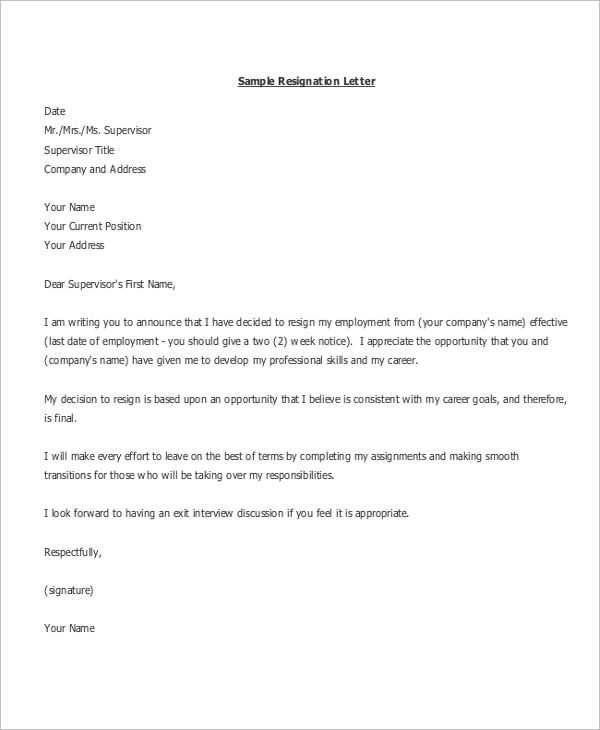
Express gratitude for the opportunities you’ve had at the company. Acknowledge the positive aspects of your experience without going into excessive detail. Keep the tone respectful and focused on the positive, avoiding any negativity.
Offer Assistance with the Transition
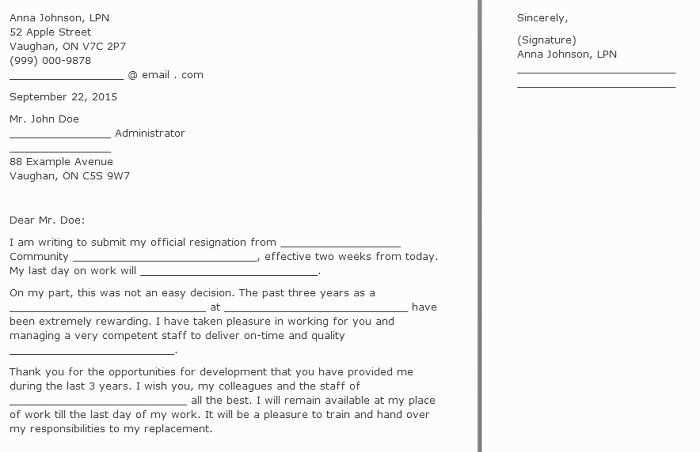
Show your willingness to help during the transition period. This could include training a replacement, organizing your responsibilities, or offering to assist with projects in progress. This approach shows you care about the team’s success even after your departure.
Finally, keep it brief and to the point. Avoid unnecessary details about your reasons for leaving or personal matters. Your goal is to leave on a positive note while ensuring a smooth transition.
In this version, the meaning of each point is preserved, with words repeated no more than two or three times, while the structure remains logical and coherent.
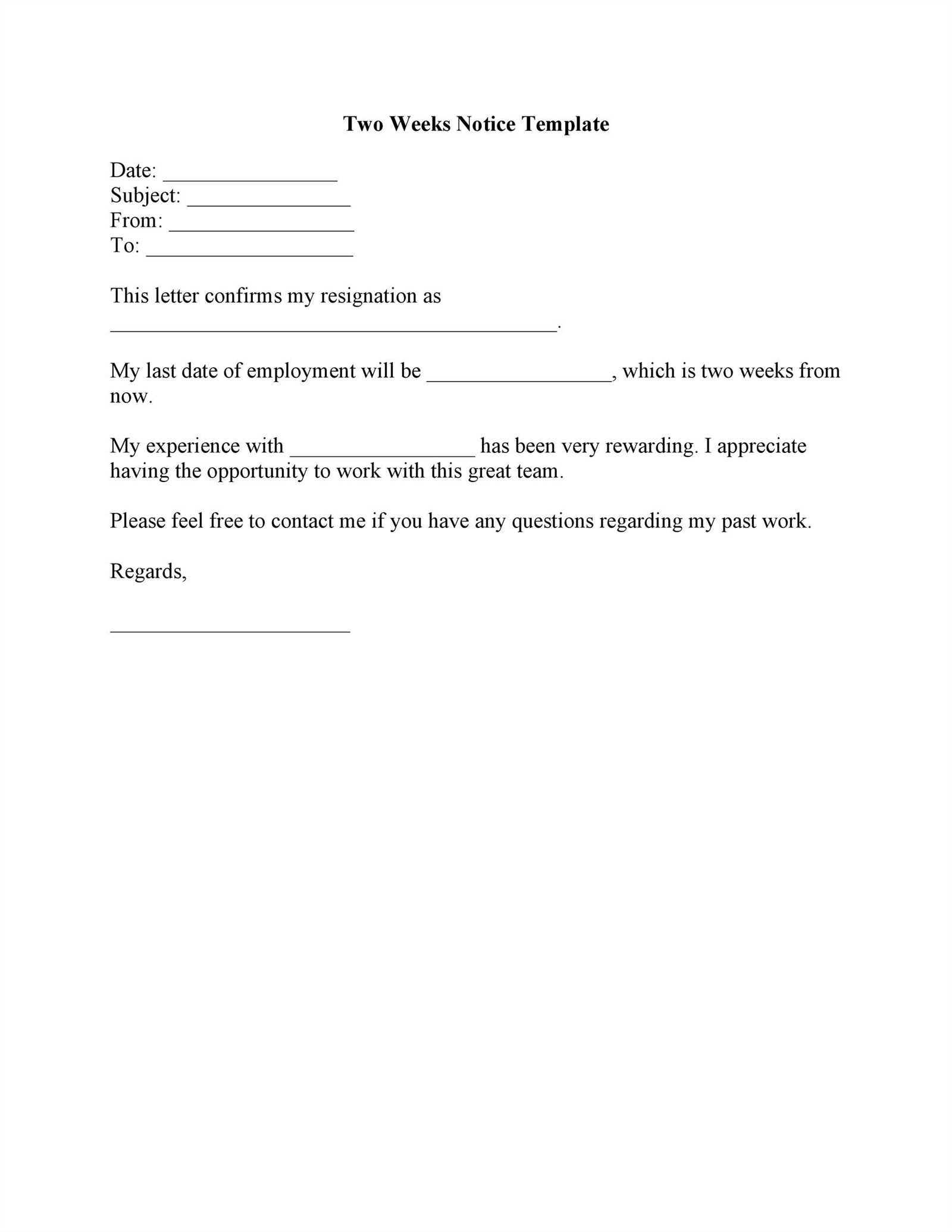
To create a concise and clear two weeks notice letter, follow a simple structure. Start with a direct statement of your intention to resign. Be sure to mention your last working day clearly to avoid any ambiguity. It’s helpful to thank the employer for the opportunity you had during your time at the company, but keep it brief and sincere.
Next, offer assistance with the transition process. Mention your willingness to help train a replacement or wrap up pending projects. This shows professionalism and ensures a smooth handover. Avoid over-explaining or adding unnecessary details, as clarity and brevity are key.
Conclude the letter by reasserting your gratitude and leaving the door open for future connections. It’s not necessary to go into personal reasons for leaving, unless you feel it’s important or appropriate. Keep the tone formal and respectful throughout the letter.